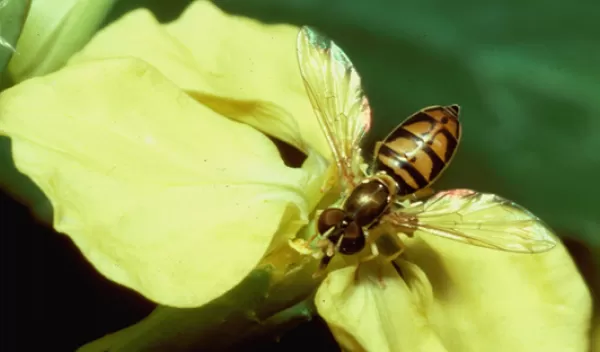
Research suggests natural selection can slow evolution, maintain similarities across generations
Natural selection is usually understood in the context of change. When organisms deviate from the norm, they may gain advantages that let their lineages outlast those of their less-adaptable relatives.
But U.S. National Science Foundation-supported research from Michigan State University suggests that natural selection also has the power to keep things the same.
"Natural selection has given us a lot of diversity, probably most of it," said Jeff Conner of Kellogg Biological Station, a Long-Term Ecological Research site supported by NSF. "But natural selection can also cause similarities."
Conner and his team have published a report in the journal New Phytologist that expands science's understanding of natural selection in the face of another evolutionary mechanism called genetic constraint.
The idea behind constraint is that as species evolve they can lose genetic flexibility in certain areas. This drives specific traits to stabilize and persist through generations.
It's tempting to think of natural selection as the accelerator of evolution, driving different or divergent traits, and constraint as the brakes, maintaining or conserving similarities, scientists believe. "Our work flips the script on that a little bit," Conner said. "We're suggesting that selection can also slow things down, that it can cause similarities as well as differences."
The researchers relied on wild radish as a model organism. It’s also a damaging weed in agriculture, especially in wheat fields in Australia and the southeastern United States.
The scientists studied a defining feature of wild radish, the length of its stamens, or pollen-producing parts. Two of its six stamens are short and four are long. That trait or feature is also shared widely across wild radish's nearly 4,000 relatives in the mustard family.
To evaluate the influence of selection and constraint on this family's distinctive stamen trait, the team turned to what's called artificial selection. They selectively bred wild radishes whose stamens were closer to the same length to try to change that characteristic.
"Perhaps the best method to test for short-term constraints is artificial selection because if a trait responds to artificial selection, it clearly can evolve," the team wrote. "But if the trait does not respond, there is a constraint caused by a lack of genetic variation."
Not only did the trait respond, it did so very quickly. The team reduced the stamen length difference by more than 30% during its experiments.
"This family of plants has maintained this four-long, two-short trait over 50 million years and we can get rid of a third of the difference in five generations, which would be five years," Conner said. "My guess is if we kept going, we would get back to six stamens of equal length."
Researchers believe the stamen of different lengths gives the species an advantage when it comes to how pollinators interact with the plant, but they aren't sure exactly what that advantage is.
Wild radish still holds some mysteries, but it's provided a potent reminder of the power of natural selection, according to Conner. "A lot of things people have thought selection couldn't do, we're learning that selection can do."
According to Sam Scheiner, a program director in NSF's Division of Environmental Biology, "This study demonstrates the enormous ability of natural selection to hold species in stasis for millions of years, and also to create rapid change, done here through artificial selection. As the world continues to change more and more rapidly, understanding this tension between stasis and evolution will be critical if we are to comprehend and deal with what will happen to the natural world."
